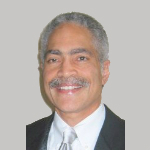Challenges of universal branch staffing

Branch networks have long been an enigma for financial institutions (FIs). They are the most public manifestation of your brand and they are still where most customer relationships start and expand. On the other hand, branches represent one of the largest expense categories, and productivity and profitability in today’s multi-channel technology driven world is increasingly difficult to achieve.
It is clear that the environment for branches is evolving.
- Fact: The number of monetary transactions initiated in branches is declining. Huge ATM networks with increasingly sophisticated machines, online banking, mobile payments and remote deposit capture are all chipping away at the branch’s role as a primary transaction generator.
- Fact: The overall number of branches is declining, though this statistic is often misinterpreted. There are approximately 92,000 bank branches and 20,000 credit union branches in the United States. However, 20% of the total (23,000) is owned by the top 5 commercial banks and they have been reducing branches at a disproportionately higher rate. In addition, mergers and acquisitions often cause consolidation. Many smaller institutions including credit unions and community banks have been adding branches.
So what to do? There is a lot of experimentation going on including: physically smaller branches, video tellers or lenders, self-service kiosks, full automation ATMs that can take loose documents and cash, remodeled branch interiors, universal staffing, mobile pop-up branches, eliminating drive-ups, more sophisticated float staff, online-only FIs, etc. The experimentation is happening in small and large FIs, and both banks and credit unions. A few institutions have gone “all-in” with branch transformation like Umpqua Bank and Truliant Credit Union. A significant number are experimenting, or fully implementing, one or more of the options. Most FIs are at least watching and evaluating.
One of the more common strategies to address the changing branch environment is to implement a universal staffing model. Briefly stated, universal staffing means training some or all branch staff to perform teller, customer service, new accounts and possibly lending functions. Within that broad description are a wide range of possibilities from training all branch staff to do everything, down to a few employees being cross-trained to provide support during lunches or peak periods. The remainder of this article discusses some of the challenges and considerations to implementing some form of universal staffing.
Universal staffing plans should not be universal. This is a key point, particularly at the start of an initiative. Branches are not shrink-wrapped boxes. They come in many sizes and configurations, exist in different markets, have different customer bases and history, have different employees and employee history, and so on. It is difficult to impose one model on a varied landscape and why would that be an objective? The true objective is for each branch to be as efficient and profitable as it can be.
The first step is to understand that knowledge is power. If you do not have a complete picture of what is happening in each branch, by whom and when, and not just in a single snapshot but over time; how can you know which of many options is a best fit? The more complete the picture the better. Ideally it would include metrics that are less obvious such as nearby ATM usage, mobile or online usage by the branch’s customers, digital phone use, etc. Knowledge should encompass which employees are doing the most work and which are doing the best work. Performance measurement is a useful tool both before and after any initiative.
Some branches are better candidates than others. Branches with moderate and consistent volume are better served by universal staffing. As volume increases, it becomes more difficult to maintain service levels with a universal model. That is because more time consuming or complex activities do not mix well with quicker monetary transactions unless there is enough slack time to buffer the difference. A branch with consistently high teller transaction or cash volume will be more efficient with a teller line. Of course it is possible to staff a teller line with employees who are universally trained, but there is plenty of quantitative data that high performing tellers do significantly more transactions with fewer errors than a universal employee who is an average teller.
Higher skill employees can potentially be shared among multiple lower volume branches. Many FIs are now scheduling branch managers, lenders or financial advisors across several branches in an area. Universal employees can work with shared specialized employees to provide quality service. A good scheduling tool that includes on demand flex scheduling is helpful in keeping this strategy from becoming a maintenance problem.
Merging skills is not easy, but technology can help (or hurt). Traditional branch operations with specialized employees tend to develop many unique processes over time. Teller, new accounts and customer service, and lending may each use completely different applications from different software vendors. Forms, processes, management, knowing who to call, and other job requirements may also vary. These are the tricks of the trade. The more tricks there are across the services, the more difficult it is to achieve employee’s competent across the skillsets.
That means it is important to evaluate the technological, procedural and training environment early in the project. Migrating toward universal staffing is asking employees to get good at what traditionally have been two or three separate jobs. If the operational foundation of technology, processes and training still work as though they are different jobs, the number of employees who succeed will be small.
Some technologies can have a direct impact without completely changing the customer experience. For example, cash recyclers can make it simpler for employees who are not used to handling cash to perform the function. However, it is not a silver bullet for all situations. Recyclers are not as effective if a branch is heavily cash in or heavily cash out oriented. They work best when the amount of cash in and cash out are reasonably equal (remember, knowledge is power). Process automation can reduce the number of forms and/or processes that employees have to learn, but will require a higher initial commitment from I.T.
Do not forget the customer experience. Universal staffing, along with the other branch transformation options, can have a significant impact on the customer experience. It is easy, and risky, to get caught up in the details of the project, technology, procedures, training and implementation; but forget the customer. Your customers are not just a metric that generates activity and must be supported, but people who have gotten used to a certain experience with your institution. One of the big five commercial banks recently ran into a negative press buzz-saw after closing drive-up lanes at some branches and trying to replace them with high-tech ATMs.
It is possible that changing the staffing model can actually improve the customer experience. At worst the impact should be neutral. Changing how employees do their jobs by definition is a shock to the system that creates risk to the customer experience. If the logistics of the change itself also has a negative effect on customers, they will notice.
This is evolution, not a race. Gather knowledge, give it thought, start small, experiment with different options, avoid doing harm. There is no requirement to solve all issues with a single solution all at once. That means management needs to back the concept, but give the project time and support. Transformation requires flexibility. More than any other group, management affects whether an organization is flexible or brittle. Expectations of rapid results or that every initiative will succeed, may lead to disappointment instead of transformation.
Branch employees are the only ones who can make universal staffing or any other transformation initiative succeed. This needs to look to them like a good idea rather than an edict. An option is to introduce Universal Certification as a career path. It would be a more significant upward jump for tellers or other entry level employees, but having the certification can still be made significant for managers or lenders. Ultimately there will be fewer overall positions and compression of the differences between them.
It is clear the environment for branches is evolving, but not nearly as fast as many tech-oriented bloggers would have us believe. To remain static will lead to eventual extinction. Each financial institution has a culture and a history. Thoughtful transformation within that context can lead to successful evolution.

